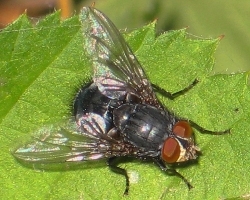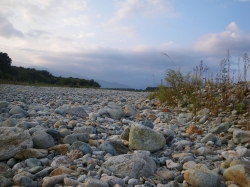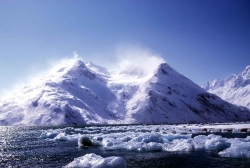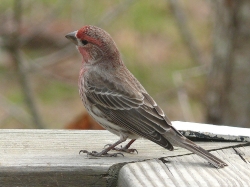How does your classroom work? You have a teacher. You have students. You have desks and chairs. You have papers and pens. You have lights. Some of these things are alive. Some are not. So what if you take one of these things away? Maybe the chairs. With all the students on the floor, it would be harder to learn, right? You only learn when all of the parts of your classroom work together. Life on planet Earth is the same. If you take one piece away, it can be the difference between life and death for the other pieces.
No plant or animal can live all by itself. Think of a fly, which is eaten by a fish, which is eaten by a frog, which is eaten by a bird. That's a very small chain, and life is a lot more complicated than that. One living thing needs millions of other living things around it in order to live. They all depend on each other. That means anything from the large food they eat to the tiny bacteria on their skin. If something is
biotic, it's a living part of an environment. If the flies disappear, the fish can't eat. Then neither can the frog, or the bird . . . This can keep going up the food chain until it starts hurting people too.

Better think again before you swat me. I'm an important biotic you know..
N C (Nyanna), Public domain, via Wikimedia Commons
Losing one kind of living thing is not
the only problem that can bring the whole chain down. What would a fish do without water? What would the bird do without wind? These things are abiotic or the non-living parts of an environment. We do not even have to take the chairs away from your classroom to make a big change. What if we covered them in spikes? Then the kids will squirm, the teacher will get upset, then the paper and the pencils will not get used. It will become very hard to learn. If the air in a forest gets too cold, the flies start to die. If the water gets too hot, the fish will be too hot to swim, and so on and so on.

Doesn't look like we're going to be doing any fishing here today.
Kanohara, Public domain, via Wikimedia Commons
Now, instead of taking away chairs or pencils, let's take you away! Instead of a classroom, we are going to drop you right in the middle of a parking lot to learn. Sure, you might learn about straight white painted lines or what different state's license plates look like, but you won't learn much else. Your classroom is the best place to learn the things you need to pass your tests. A
habitat is the environment where a living thing naturally lives and will be able to live best. It will be easiest for a living thing to live if they are in a place that has all the different things they need. A plant needs soil, sunshine, air and water. Animals need a bit more than that.
They need:
- air
- food
- water
- a place to hide and sleep
- and a place to raise young
If they're large or small, they might need a lot of space or very little. Some big animals, like a horse, need miles and miles to roam and eat food. Others, like a worm, can make do with just a few feet of dirt. Soon the brain of a person will need bigger and better habitats to learn. Instead of one room, you may need to go to college where there will be different buildings to learn science, math and history.

This may be a tough habitat for birds and frogs to live.
Your classroom is a system. That means there are a lot of parts working together to make one thing. Eco means part of nature, or things that do not come from people. When you put the two together you have something very important. An
ecosystem is the living and non-living parts of a habitat working together. This includes everything from worms and birds to the things around them, like dirt, water, or the sun shining down. An ecosystem can be so small that it fits under a rock or so big that it covers Earth. And just like in your classroom, if you take one piece away, it can all fall down.

Looks like the right ecosystem to find a worm.
Ken Thomas, Public domain, via Wikimedia Commons
We have talked about ecosystems as if they can break as easily as glass. The truth is they are very strong. They last for thousands or millions of years and last through lots of changes. In fact, the many kinds of plants and animals we see come from big changes on Earth. Humans need to be careful, though. We have a terrible record, killing a lot more ecosystems than we save. So please, handle them like glass. If enough people don't care, then the flies disappear. And you now know what that means.
References:Kids Geo. "Ecosystems." Kids Geo, 2011. <
http://www.kidsgeo.com/geography-for-kids/0164-ecosystems.php>
"Science for Kids: World Biomes
and Ecosystems." Ducksters. Technological Solutions, Inc.
(TSI), 2014. <http://www.ducksters.com/science/ecosystems/world_biomes.php>
Geology 4 Kids. "An Ecological System." Geology 4 Kids, 2011. <
http://www.geography4kids.com/files/land_ecosystem.html>